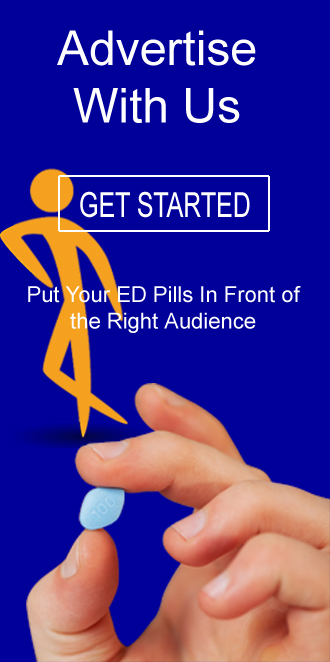Stats
Experts widely agree that ED is common and that the risk of developing ED increases with age. Some studies cite that ED is the most common form of sexual dysfunction that affects men.
But estimates on just how common ED is vary widely. One 2018 reviewTrusted Source estimated that ED affects about a third of men. And a 2019 reviewTrusted Source found that the global prevalence of ED ranges between 3 percent and 76.5 percent.
The Massachusetts Male Aging StudyTrusted Source, which was completed in 1994, is often cited by experts in discussions of prevalence, even though the research is older. This study found that around 52 percent of men experience some form of ED, and that total ED increases from about 5 to 15 percent between ages 40 and 70.
Though the risk of ED increases with age, it’s still possible for young men to experience ED. A study published in the Journal of Sexual Medicine found that ED affected about 26 percent of men under the age of 40.
The Cleveland Clinic estimates that it’s normal to have trouble getting or keeping an erection for up to 20 percent of sexual encounters. Having trouble getting an erection more than 50 percent of the time can indicate a medical issue.
Regular exercise can improve your circulatory health and may help treat ED if your BMI is over 25 or if you’re physically inactive.
Source:
Yetman, Daniel. “How Common Is Erectile Dysfunction? Stats, Causes, and Treatment.” Healthline, Healthline Media, 5 Mar. 2020, https://www.healthline.com/health/how-common-is-ed#risk-factors.
- The worldwide prevalence of erectile dysfunction is expected to increase to 322 million men by 2025. (International Journal of Impotence Research, 2000)
- ED affects about 30 million men in the United States. (Current Opinion in Nephrology and Hypertension, 2012)
- 1 in 10 men is estimated to have ED at some point in his lifetime. (Cleveland Clinic, 2019)
- In one study of eight countries, the U.S. has the highest rate of self-reported ED (22%). (Current Medical Research and Opinion, 2004)
- Spain has the lowest rate of self-reported ED (10%). (Current Medical Research and Opinion, 2004)
- ED affects about 10% of men per decade of life. For example, 50% of men in their 50s are affected by ED. (University of Wisconsin Health, 2019)
- Men older than 40 are three times as likely to experience complete ED than younger men. (The Journal of Urology, 1994)
- ED is less common but increasing in young men. It was previously believed that only 5% to 10% of men younger than 40 experienced ED. But a more recent study showed that ED was prevalent in 26% of men younger than 40. (Boston University School of Medicine, 2002) (The Journal of Sexual Medicine, 2013)
- Premature ejaculation is more common in younger men than older men. (The Journal of Sexual Medicine, 2013)
You can’t research ED statistics without reading about the Massachusetts Male Aging Study (MMAS) of 1987-1989. Including 1,290 people, MMAS was the most extensive study of ED since 1948. One measurement of ED in the study was the severity of impotence. Here are the results:
- Any degree of impotence: 52% of subjects
- Minimally impotent: 17% of subjects
- Moderately impotent: 25% of subjects
- Completely impotent: 10% of subjects
(The Journal of Urology, 1994)
Note: In a more recent study, severe ED was more common in younger men (49%) than in older men (40%). (The Journal of Sexual Medicine, 2013)
- ED is medication-related in 25% of patients in outpatient clinics. Blood pressure medications are the most common culprit in medication-induced ED. (Boston University School of Medicine, 2002)
- Vascular disease is the most common cause of natural ED, with 64% of erectile difficulties associated with heart attacks and 57% associated with bypass surgery. (Boston University School of Medicine, 2002)
- 35% to 75% of men who have diabetes will also experience ED. (Boston University School of Medicine, 2002)
- Up to 40% of men with renal failure have some degree of ED. (Boston University School of Medicine, 2002)
- 30% of men with COPD have impotence. (Boston University School of Medicine, 2002)
- Smoking cigarettes and using illicit drugs were more common in younger ED patients. (The Journal of Sexual Medicine, 2013)
- Obesity and diabetes are responsible for 8 million cases of ED. (Polski Merkuriusz Lekarski, 2014)
- The majority (79%) of men with ED are overweight (BMI of 25kg/m2 or higher). (Polski Merkuriusz Lekarski, 2014)
Sexual function can affect a person’s overall health and quality of life. Many men with ED may experience depression or low self-esteem at some point in time and ED can put stress on relationships. Many men with ED will complain that their sex lives are less than satisfactory, which is often the main reason they seek medical treatment.
- Men with ED experience twice as many heart attacks and strokes (6.3%) in comparison to men who don’t have ED (2.6%). (American Heart Association, 2018)
- People with depression have a 39% higher chance of developing ED than those without depression. (The Journal of Sexual Medicine, 2018)
- Having ED also increases the risk of depression by 192%. (The Journal of Sexual Medicine, 2018)
- People with ED are nearly three times more likely to experience depression than those without ED. (The Journal of Sexual Medicine, 2018)
- Sexual dysfunction is present for 20% to 25% of infertile couples. (Reproductive Partners Medical Group, 2020)
- 1 in 6 infertile men is affected by ED or premature ejaculation. (Nature Reviews Urology, 2018)
Phosphodiesterase5-inhibitors (PDE5-Is) like Viagra are the recommended treatment for ED, but these medications won’t be effective in 40% of patients, according to The Journal of Urology. Alternative treatments include injections, vacuum devices, and penile implants.
- Only a quarter of men with ED actually receive treatment. (The Journal of Sexual Medicine, 2014)
- 1 in 4 men who seek ED treatment is younger than 40. (The Journal of Sexual Medicine, 2013)
- Spending for the three most popular ED drugs (Viagra, Levitra, and Cialis) is over $1 billion worldwide every year. (Clinical Pharmacology and Therapeutics, 2011)
- While PDE5-Is only make up 37% of the total annual costs of all ED related services. Additional costs include doctor’s appointments, diagnostic procedures, hormone therapy, etc. (Journal of Urology, 2005)
- ED pills like Viagra (PDE-5 inhibitors) had the lowest annual cost per patient. Each patient with ED spent about $120 per year in 2001 on treatment. (Journal of Urology, 2005)
- If ED medications fail, penile prosthesis surgery is the most cost-effective treatment for ED in the long-term. Although they can cost upward of $20,000, insurance and Medicare generally cover penile implants. (Coloplast) (The Journal of Urology, 2018)
-
Take Quiz
- Show All Answers | Clear All Answers
-
1. At what age can ED occur?
-
2. Which causes ED?
-
3. Low levels of which hormone can help cause ED?
-
4. How many cases of ED have a physical cause?
-
5. Which is the most common treatment for ED?
-
6. What is erectile dysfunction?
-
7. About how many men in the U.S. experience ED?
-
8. What percentage of men in their 60s experience ED?
-
9. How do medications such as Viagra, Cialis, Stendra and Levitra work to reverse erectile dysfunction?
-
10. What is a true statement about these popular ED drugs?
-
11. Which of these is not a viable treatment option for ED?
-
12. Which of the following is the most common vascular cause of erectile dysfunction?
-
13. Which of the following ways is NOT a way to diagnose erectile dysfunction?
-
14. ED is only caused by low testosterone levels?
-
15. Which of the following erectile dysfunction myths are untrue?
Sources:
“What Do You Know about Erectile Dysfunction?” Erectile Dysfunction Quiz - Health Encyclopedia - University of Rochester Medical Center, www.urmc.rochester.edu/encyclopedia/content.aspx?ContentTypeID=40&ContentID=ErectileDysfunctionQuiz&CustomAnswers_ErectileDysfunctionQuiz=q1a5_c%2Cq2a5_c%2Cq3a4_c%2Cq4a3_c%2Cq6a1%2Cq8a1_c. Accessed 21 July 2023.
“Erectile Dysfunction Quiz - Causes, Treatment of Ed.” AARP, www.aarp.org/health/conditions-treatments/info-03-2013/erectile-dysfunction-quiz.html. Accessed 21 July 2023.
“Quiz: Erectile Dysfunction.” MSD Manual Professional Edition, www.msdmanuals.com/professional/multimedia/quiz/erectile-dysfunction. Accessed 21 July 2023.
Lab., Walkin. “Erectile Dysfunction Quiz.” Walkin Lab, 17 Feb. 2022, www.walkinlab.com/blog/erectile-dysfunction-quiz/.


